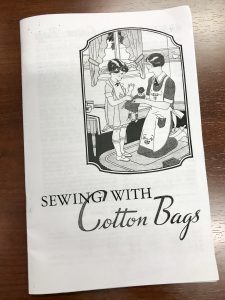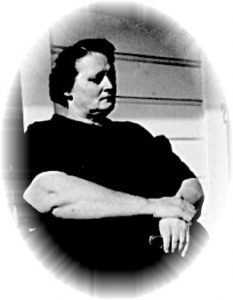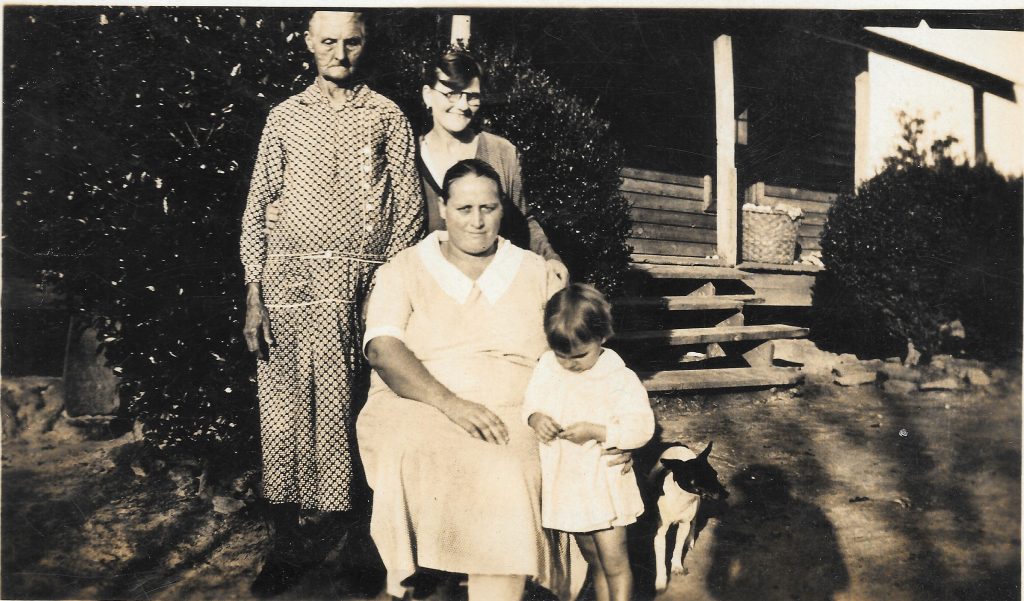My maternal grandmother, Laura Jane Waldrop Gregg, did not coin the idiom “Waste not, want not,” but she lived it every day in the way she managed her house. Born in 1899 and married in 1921, she had her third of four children—my mother–in October 1929, just at the cusp of the Great Depression, and her fourth child—my aunt Dot–in 1933, in the heart of it. Continue reading “Waste Not, Want Not: Feed, Seed, and Flour Sacks”
Guy Oscar Blackburn

(photo credit: family photo collection posted on Ancestry.com)
Contributed by his second cousin, once removed,
Karen Hollingsworth Gardiner
Guy Oscar Blackburn was born in 1910 in Alabama City, Alabama. He ran away and joined the circus in 1926. By 1934, he was a featured aerialist and female impersonator with Seal Bros. Wild Animal Circus, which had its winter quarters in Fredonia, Kansas. Guy last trouped with Dailey Bros. Circus in 1949. He died in 1955 in Oklahoma City, Oklahoma.
Guy Oscar Blackburn
I know a lot more about Guy Blackburn than I did in January 2019, when I began researching him for this class. While I still don’t know his birth date, I now know that he died in 1955 and where and how–though not yet why.
Rating Scale for Personal Appearance
Navratil, Lillian; Regina Friant; and Rosalie Rathbone. “Rating Scale for Personal Appearance.” The Manual Arts Press, 1936. 1632.002/27. University of Alabama Special Collections. “Carolyn Shepherd Price Home Economics Teaching Materials” collection; “Relationships—Personal” folder.
One culturally interesting item in the Hoole archives is a packet of ten identical “Rating Scales for Personal Appearance.” Each is a two-page handout (printed front and back) to be used not by students to rate themselves, but by home
Soaring with the Circus: Depression-era Aerial Acts
In 1926, when 16-year-old Guy Oscar Blackburn crept out of Alabama City, Alabama, and joined the Christy Bros. travelling circus, his foremost thought was probably just to get out—to get away from small towns and small minds. Likely, he didn’t give much thought to what he might actually do with a travelling circus, but over the course of his subsequent 23-year circus career, he soared. Continue reading “Soaring with the Circus: Depression-era Aerial Acts”
Sewing with Cotton Bags
Sewing with Cotton Bags. The Textile Bag Manufacturers Association, 1937.

Sewing with Cotton Bags is a 32-page booklet (5.5 x 8.5 inches) produced in February 1937 by The Textile Bag Manufacturers Association. This copy was obtained on eBay, rather than being housed in a library archive.
Laura Jane Waldrop Gregg

(1899 – 1971)
Contributed by her granddaughter Karen Hollingsworth Gardiner
Laura Waldrop Gregg was likely born in New Lexington, a farming community in extreme North Tuscaloosa County, Alabama. In 1921, she married Henry Clay Gregg, thirteen years older, and they moved to an unpainted dogtrot house on Factory Road in Cowden, a rural community between Fayette and Byler Roads. Byler Road is now US 43 and Cowden is present-day Samantha. By 1932, she had three children (Henry Loyal, 11; Virginia Dare, 7; and Miriam Augusta, 3). She and Henry would have one more child, Dorothy Dean, in 1933, and they would remain on their Cowden farm until around 1950, when they moved to Northport. She was a homemaker—known for her good cooking and beautiful quilts.
Pieces: A Life
Profile of Laura Jane Waldrop Gregg
by her granddaughter Karen Hollingsworth Gardiner

“My daddy was a mean man and I didn’t like how he treated Momma,” my mother revealed to me a dozen or so years after her father had died and just three or four years after my beloved grandmother, her mother, had passed away. In fact, she said she didn’t like or respect her father much at all. There was a strange hardness in her voice. Then silence. Then a stunning explanation.